Computers
|
|
| Product |
Cat No. |
Price |
Description |
| Model 100 (8K) |
26-3801 |
$799.00 [Orig]
$499.00 [RSC‑12]
$399.00 [RSC‑14] |
|
| Model 100 (24K) |
26-3802 |
$999.00 [Orig]
$799.00 [RSC‑12]
$599.00 [RSC‑14] |
|
| Model 102 |
26-3803 |
$499.00 |
|
|
Accessories
|
|
| Product |
Cat No. |
Price |
Description |
| AC Adapter |
26-3804 |
$5.95 |
Conserves battery power while at the office or at home. U.L. Listed. |
| Model 100 Acoustic Coupler |
26-3805 |
$39.95 |
Connects your Model 100 to a telephone handset when direct connection to a modular phone jack is not possible. |
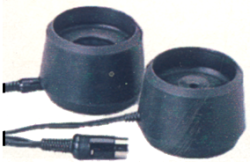 |
| Disk/Video Interface |
26-3806 |
$799.00 |
Turn your Model 100 into a versatile disk-based home or office system! Built-in disk drive lets you create, store and retrieve files on diskette. It’s much faster and more reliable than cassette storage. Provides a 40-character by 25-line screen display on any television, and an 80 x 25 display when hooked to a standard video monitor. The larger screen is perfect for word processing or developing programs in BASIC. Just plug the Disk/Video Interface into an AC outlet, connect a TV or monitor and a Model 100 – all cables included. There’s no new operating system to learn and one simple command switches the display to the video screen. The Interface does not require use of Model 100′s standard connectors – so you have room for further expansion. You can add a printer, bar code reader, RS-232C communications device or cassette recorder. Requires Model 100 with 16K memory. |
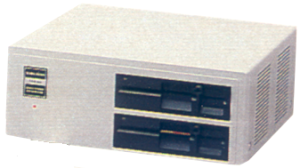 |
| Second Disk Drive |
26-3807 |
$239.95 |
Installation not included. |
| Tandy 200/Model 100 Portable Disk Drive |
26-3808 |
$199.95 |
Get fast access to 100K of data on 3-1/2″ floppies. Features menu-driven operation, list of files on disk, plus FORMAT, SAVE, LOAD, KILL and RENAME functions. Transfers data at 19,200 baud. Battery warning lamp. disk access lamp. When the batteries are low, and the unit is in process of saving, loading or backing up, it will finish its job befwe shutting down. Unit will not function if batteries are low, but will finish the job. Initialization software included. Weighs 1-3/4 lbs. 2 x 4-15/16 x 6-1/8″. Requires four “AA” batteries or AC Adapter (not included). |
| Model 100 System Briefcase |
26-3809 |
$49.95 |
This compact briefcase provides plenty of room for your TRS-8 0Model 100, CCR-81 Cassette Recorder and cables. 20 x 14 x 4″ |
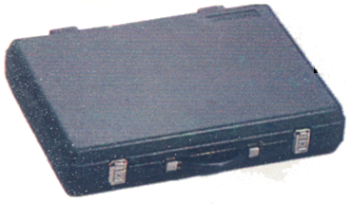 |
| Model 100 Carrying Case |
26-3811 |
$49.95 [RSC‑12]
$39.95 |
Compact carrying case for your Model 100 system – perfect for travel. Provides plenty of room for the Model 100 computer, cassette recorder and cables. Measures just 20 x 14 x 4″ |
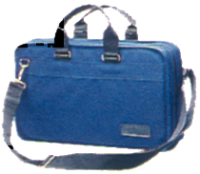 |
| Model 100 Legs |
26-3812 |
$3.99 |
|
| Portable Disk Drive 2 |
26-3814 |
$199.95 |
200K of data on 3-1/2″ floppies. Requires four “AA” batteries or AC Adapter (not included). |
.jpg) |
| Portable Disk Drive Carry Case |
26-3815 |
$24.95 |
|
| Model 100 8K RAM Expansion |
26-3816 |
$119.95 |
Add 8000 characters of memory. Up to three memory modules may be installed to give you a 32K Model 100. Installation required (not included). |
| Model 102 8K RAM Expansion |
26-3817 |
$14.95 |
|
| Model 100 Bar Code Reader |
26-1183 |
$99.95 |
This optical scanning device is expressly for the Model 100 and is ideal for such tasks as billing, couponing and retail-item control. The pen-like wand simply plugs into Model 100′s standard bar code reader interface. Software drivers callable from BASIC allow the Model 100 to read the Universal Product Code, 3 of 9, or NATI bar code formats. Bar code wand contains “soft-touch” push-button switch to conserve power when not in use. |
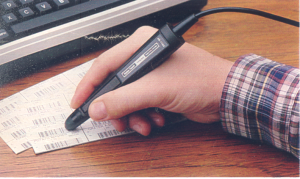 |
| TRP-100 |
26-1275 |
$299.95 |
Rugged and incredibly quiet (50 decibels) – perfect for use with Model 100. Use it anywhere – works on batteries or AC power! Weighs less than 5-1/2 lbs. 2-3/4 x 11-7/8 x 7″. U.L. listed AC operation or five “C” batteries (not included). |
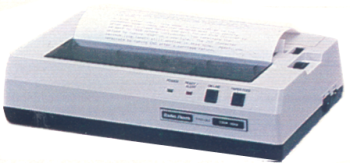 |
| Parallel Printer Cable |
26-1409 |
$14.95 |
|
| Direct-Connect Modem Cable |
26-1410 |
$19.95 |
Connects Model 100 to a modular phone jack. Includes one free hour (non-prinme time) on CompuServe and Dow Jones News/Retrieval. |
| VM-2 Monochrome Monitor |
26-3211 |
$159.95 |
|
| Acoustic Coupler 2 |
26-3818 |
$39.95 |
|
|
Books
|
|
| Product |
Cat No. |
Price |
Description |
| Tandy 102 Technical Reference Manual |
26-252 |
$9.95 |
90 Pages. |
| The Tandy 200 Portable Computer |
26-3869 |
$19.95 |
by Dr. David Lien |
| Model 100 Technical Reference Manual |
26‑3810 |
9.95 |
Theory of operation on Model 100 hardware. |
| The TRS-80 Model 100 Portable Computer |
26‑3819 |
14.95 |
A complete step-by-step learner’s manual. Discusses the capabilities of the Model 100, plus a complete course in Model 100 BASIC. |
| Portable Computing With the Model 100 |
26‑3820 |
14.95 |
Emphasizes practical applications of Model 100. Includes cassette tape with 12 programs |
|
Cassette Software
|
|
| Product |
Cat No. |
Price |
Description |
| Assembler/Debugger |
26-3823 |
$49.95 |
Debug, write and assemble machine language code. |
| Bar Code Generator |
26-3845 |
$34.95 |
Takes input from Model 100 TEXT files and produces bar codes in six forms. Requires 24K, Cassette recorder, printer and cables. |
| Bar Code Reader |
26-3846 |
$19.95 |
Allows bar code wand to read Interleaved Two of Five, Codabar and UPC-E bar codes. Requires 16K, cassette recorder and wand. |
| BASIC Language Lab |
26-3821 |
$29.95 |
This comprehensive guide helps you learn Model 100′s powerful Microsoft BASIC in an easy to use tutorial style. In addition to teaching BASIC commands and the process of writing programs, the BASIC Language Lab covers other related areas such as redefiniting function keys F1-F8, automatic execution of BASIC programs, and using Model 100′s graphic and sound capabilities. BASIC Language Lab provides complete examples of each new concept presented. Includes a cassette tape with three sample programs for further illustration. |
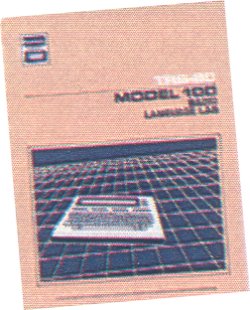 |
| Business Decisions |
26-3832 |
$39.95 |
Programs include Inventory Replenishment Analysis, Sequential Decision Analysis, Financial Ratios, Break-Even Analysis, Linear Programming and Pricing Table. Requires 24K memory. |
| Business Finance |
26-3831 |
$39.95 |
Twelve programs for business and personal finance applications. Easy to use. Includes Rent or Buy Decision, Depreciation and more. |
| Calculator |
26-3827 |
$19.95 |
Turn your Model 100 into an arithmetic “scratchpad”. The basic program performs addition, subtraction, multiplication, division, exponentiation and sfweral extended math functions. A special business program does extended calculations formulated to solve business-related problems. |
| Data Manager (Cassette) |
26-3836 |
$39.95 |
Personal filing system for the TRS-80 Model 100 Portable Computer. Lets you store, examine, update and list a variety of information – from personal records to appointment schedules. |
| Data Manager |
26-3841 |
$69.95 |
With user-defined record and report layouts. Requires 24K, cassette recorder and Disk/Video Interface. |
| Data/Sort Plus |
26-3838 |
$49.95 |
Powerful data base management system. DATA and DATAW let you enter, update, merge, and list information. SORT permits organizing files alphabetically or numerically. DATAW also allows fast information entry using the Bar Code Reader. |
| Decision-Making with Investment Analysis |
26-3824 |
$69.96 |
Compute yield to maturity, discount and more with the bonds analysis program. The options trading program charts and graphically displays the effects of various strategies such as Bull or Bear Spreads.< And you can compute discounted or non-discounted commissions with the stock commissioning program./td> |
| Executive Calendar |
26-3833 |
$19.95 |
A timemanagement program for busy executives. Display your scheduled appointments or a calendar for any month of any year with a few keystrokes. The program also calculates either days or weekdays between two dates and keeps track of the dates of 17 holidays. |
| Expense/Graph Plus |
26-3837 |
$49.95 |
Create financial reports and graphs with your TRS-80 Model 100. Use the Expense program to produce expense account reports or for planning and budgeting. The Graph program lets you create pie, bar or line graphs of any reports generated with Expense. |
| Function Plotter |
26-3834 |
$19.95 |
Graph almost any algebraic function of one or two variables, including planar cartesian, planar polar, three-dimensional cartesian and cylindrical polar. Requires either the CGP-215 or CGP-115 printers, FP-215 printerlplotter or the MultiPen Plotter. |
| Investment Analysis |
26-3824 |
$69.96 |
Computer yield to maturity, discount and more with the bonds analysis program. The options trading program charts and graphically displays the effects of various strategies such as Bull or Bear Spreads. And you can compute discounted or non-discounted commissions with the stock commissioning program. |
| Personal Finance |
26-3822 |
$19.95 |
Set up a budget to see where all your money is going. Personal Finance give you six comprehensive programs designed to assist you in managing your money. By setting budgets for various account categories of your choice, you simply enter monthly expenses in the appropriate categories. Then company your budgeted figures to the category expense totals which are presented in report format. In addition, Personal Finance includes a complete checkbook system that will reconcile monthly statements. You can also keep track of and provide reports on your savings account. |
| Project Scheduler |
26-3843 |
$39.95 |
Divide a large job into individual tasks. Requires 24K and cassette recorder. |
| Remote Disk |
26-3839 |
$59.95 |
Allows you to use your Model I/III/4/II/12 disk drive as a storage area for your Model 100 files. Easy to use and self booting. Includes cassette and diskette. |
| SCRIPSIT 100 |
26-3830 |
$39.95 |
Turns Model 100 into a true word processor-with far more powerful and sophisticated features than Model 100′s built-in word processing software. Features advanced formatting capabilities. Produce correction-free letters, memos and reports with page headings, numbers, headers and footers and much more. Requires printer. |
| Spectaculator |
26-3828 |
$49.95 |
A minispreadsheet divided into rows and columns. Enter your formulas and numbers, and Spectacular automatically calculates and displays the results. Requires 16K memory. |
| Starblaze-100 |
26-3840 |
$19.95 |
Save the Galaxy! Your mission is to destroy the alien ships being launched by the hostile mother ship. Excellent action graphics allow you to fly your fighter ship across the Model 100 screen as the aliens flee and planets zoom by. |
| Statistics |
26-3825 |
$29.95 |
Get the statistical information you need! Statistics generates reports for descriptive statistics, frequency distribution and histogram, correlation and regression, time series analysis, multiple regression and one-way and two-way analysis of variance. Includes thorough manual with examples. |
| Tandy Code Read/Write |
26-3847 |
$24.95 |
Generates and reads modified NATI code. Requires 24K, cassette recorder, printer, cable and bar code wand. |
| TS-DOS |
900-702 |
$69.96 |
A complete operating system for Model 100/Tandy 102 Portable Disk Drive. Save and load files directly in TEXT and write BASIC programs that access files on disk. |
|
ROM Software
|
|
| Product |
Cat No. |
Price |
Description |
| Multiplan |
26-3829 |
$149.95 |
An electronic worksheet that’s ROM-based-does not occupy Model 100 RAM! This portable version of, the popular spreadsheet analysis program provides a large grid for entries which can be made up of words, numbers or formulas. Alter a value or formula and watch the figures change as Multiplan automatically up dates all affected numbers. |
| Interactive Solutions |
26-3844 |
$149.94 |
Contains three programs: Data Manager, Spreadsheet and Text Formatter. Information stored in Data Manager can be utilized by Spreadsheet and Text. Data Manager can have up to 20 fields per record. Spreadsheet can be a maximum of 99 rows and 99 columns. Text gives you several printing parameters for better document control. Plugs into ROM socket – programs are not stored in RAM. |
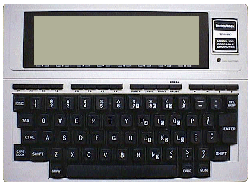
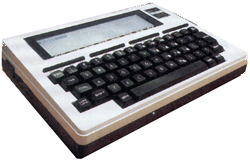
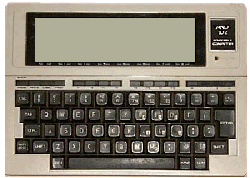




.jpg)



![[Model I]](../../../../images/computer-model1bx150.png)